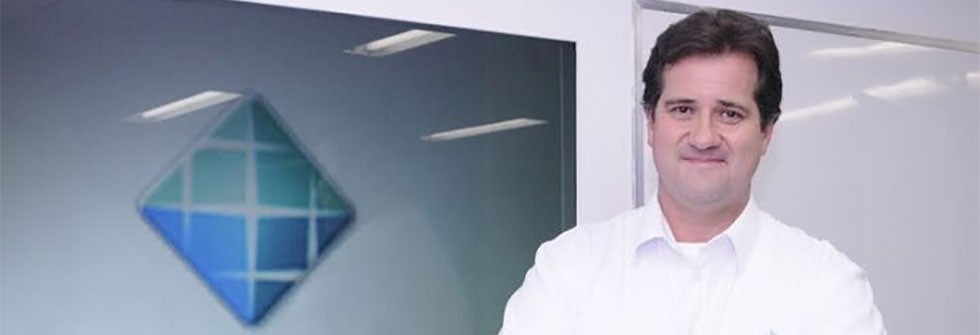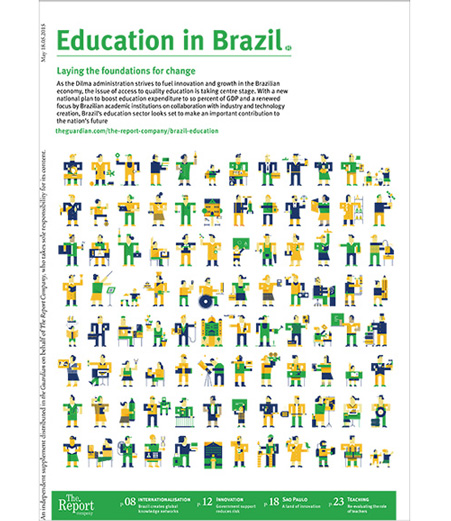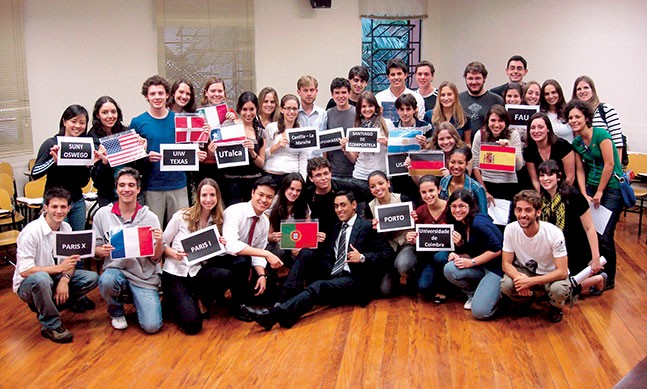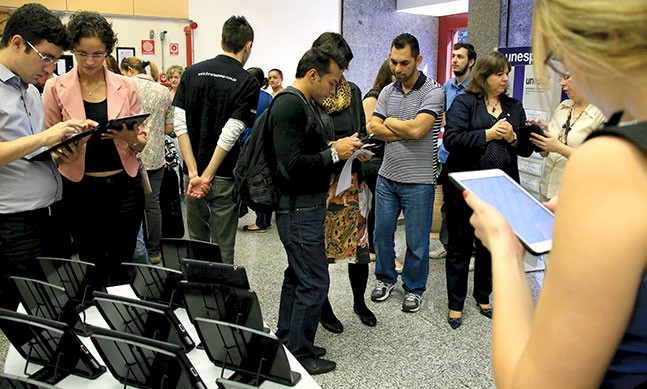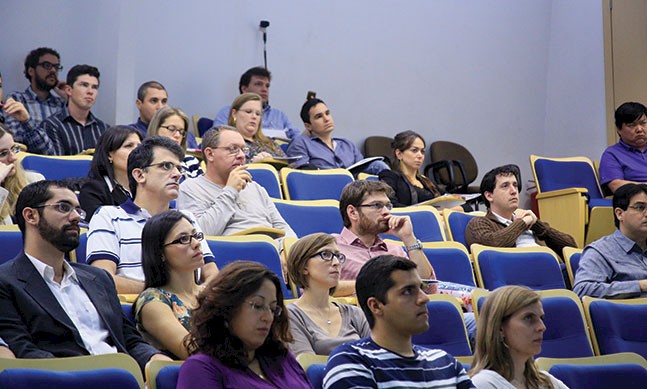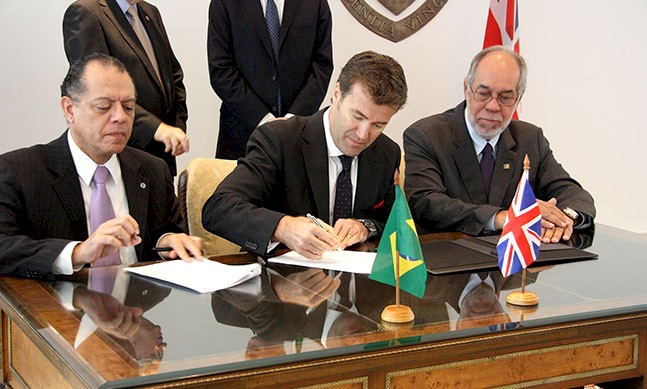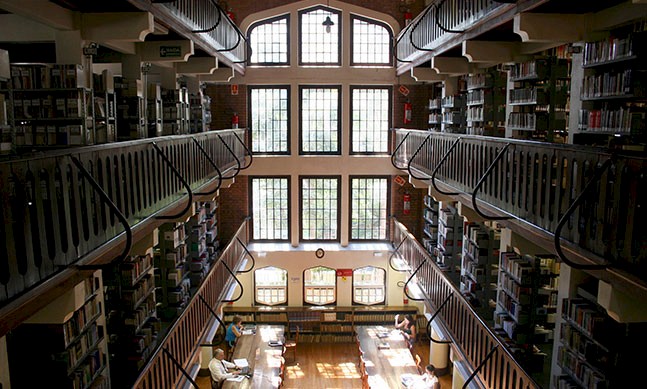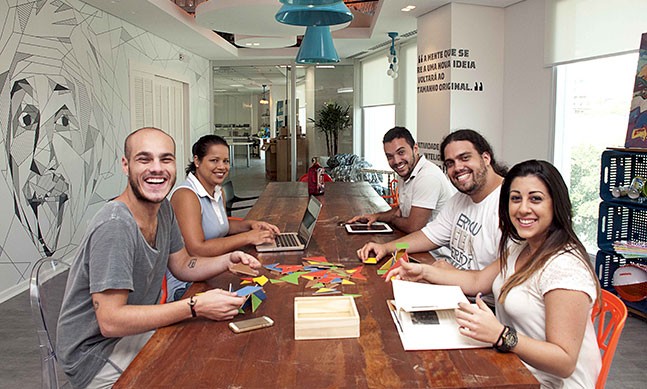Rogerio Melzi is the CEO of Estacio Participacoes, one of Brazil’s biggest higher education institutions. When he joined the company in 2009 it was emerging from a period of slow growth during which much of the sector had flourished. After a partnership with GP Investimentos, the combination of Melzi’s business acumen and his growing passion for education has helped consolidate the company, creating the conditions for expansion in both scale and quality across the 20 states in which it now operates. With all eyes on Brazil’s educational reform over the next decade, Estacio is deploying a unique blend of private sector management tools and international partnerships to bring out the best in both its students and its teachers.
The Report Company: How would you appraise Brazil’s education sector in the wake of the countrywide protests demanding, among other things, a better education system?
Rogerio Melzi: What we can say has improved in Brazil is the sheer number of students in the entire system. This is much larger than two or three decades ago. For basic, middle and high school, there was the so-called universalisation of education, with municipal governments responsible for basic and middle schools and state governments for high schools, while most public universities are administered by the federal government. There are also some very good state universities, like USP, UNESP and Unicamp.
The same growth trend applies to higher education, and we jumped from around one million university students in 1999 to more than seven million today. It’s a clear improvement, and it is largely thanks to the private sector which accounts for around 75 percent of university students. This in turn attracted entrepreneurs who have either created new universities or expanded old ones, greatly increasing supply.
The problem is that while the number of places has increased, the quality hasn’t. In the dangerous situation Brazil was and still is in, quantity must come first, but we cannot wait too long to address quality. For basic, middle and high schools, the pace of improvement is almost zero as shown by PISA, ENAD, Prova-Brasil and ENEM tests, which cannot be good for the country. Because free basic education is so bad, parents want their children to attend private schools, but these are very expensive. If your child is not in a private school and doesn’t drop out, they would like to go on to public university, which is free, but the admission process is so rigorous that only the rich are admitted. This is a very serious problem in Brazil.
Private higher education is not yet as good as public, but the gap is closing and the private sector can move faster than the public. The idea that the private sector sacrifices quality for profits is simply wrong, and we are investing millions in education to improve the virtuous cycle. A more educated population understands the world better, and can demand more of their country. Our students complain if teachers arrive late and they get fined; that doesn’t happen in public universities. So we are closing the gap in higher education, but it is in basic, middle and high schools that I am less optimistic.
TRC: What should be the focus of the reforms? The education budget should get a huge boost from the pre-salt oil profits, but how does that convert into better quality education?
RM: I don’t think the focus should be on the amount of money available but rather on how it is spent. Of course I want Brazil to invest 10 percent of GDP in education, but I also believe that the 5.5 percent that we invest today is not as bad as some people say it is. There just needs to be a greater effort to make sure it is well used. My fear is that an increase in expenditure would only increase wastage and not change anything.
The entire system needs to be meritocratic. Increasing teachers’ salaries, which are very low in Brazil, should be coupled with meritocracy and training. If teachers have more experience, they should receive higher pay. Likewise if they are absent for fewer days or get consistently better results. I also think high schools should be more vocational and guide their students more towards a profession, with national tests for each subject to assess teaching and learning. I would also centralise the purchase and delivery of materials and increase the number of hours children are in school.
TRC: Your predecessor, Eduardo Alcalay, implemented meritocracy at Estacio. Has this continued into your administration?
RM: It has grown. I articulated a lot of goals for the university and today we have a marriage between very modern management tools and a very strong academic sector. Management can complement quality, not hinder it, and my professors are becoming managers and my managers are becoming professors. I hope I cannot tell one from the other in a few years. Around 12,000 people, of which 8,000 are teachers, work at Estacio, and you have to start with a few goals for a few people. During Alcalay’s administration, there were already a lot of people involved, but today there are around three times as many people and many more key performance indicators. We now measure student complaints, the backlog of unanswered requirements, the service level – anything you can imagine is included in the system and if things are not going well, someone needs to explain why.
“While the number of places has increased, the quality hasn’t. In the dangerous situation Brazil was and still is in, quantity must come first, but we cannot wait too long to address quality.”Tweet This
TRC: What changed within Estacio with the arrival of GP Investimentos?
RM: When GP arrived I was the director of planning and, later, director of operations, but it was clear early on that as a result of a rough period in 2005, Estacio had lost the balance between financial management and academics. Students and teachers were speaking ill of the institution and in a field so dependent on word of mouth, this was a time bomb. Our biggest problem was the fact that people had lost their connection with their leaders and we quickly saw that when we got here.
TRC: How do you think Brazilians see Estacio now?
RM: Estacio's image is now much better and I think it is respected today. A study carried out by a Dutch institute into the 100 largest academic institutions in Latin America put us at number one, and as well as doctorates and masters, we are developing a research culture too. My dream is for the university to be admired. I wouldn’t go so far as to think we will be as admired as Oxford, Harvard or the MIT, but I want Estacio to be respected by the people that seek our services.
Public universities have a very important function and it is they who will be pushing the boundaries of science in the country, and who have to be our Oxfords and Cambridges. They receive a lot of investment, and, on average, our most important engineers and the CEOs of the country’s largest companies have studied in them. The Brazilian pyramid has a large middle, however, and someone needs to take care of these millions of Brazilians, those with high school diplomas but no college diplomas. Public universities will not do that because it would be extremely expensive and they do not have the necessary skills. We do.
TRC: Where do you think Estacio is most innovative?
RM: Innovation has been in Estacio's DNA ever since its inception and it was here that the idea of bringing higher education to the underprivileged was born, of having campuses in poor areas, of having classes late at night and during the summer recess. Many of the ideas in the minds of our founders were already innovative. I have travelled all around the world and I haven't seen anything like what Estacio has done in the last six years.
We had 8,000 teachers in 20 states but each one of them had created their own personal course and we had to rethink that. Now we have a knowledge management system where each class is discussed at length and then standardised. When we realised the level of standardisation we had implemented here, we saw that instead of buying books at a discount and reselling them to students, we need buy only the chapters each subject required. We buy just what the student needs and we pay all due copyrights, almost R$30 million a year.
Our centralised teaching group monitors the performance of each course and we can see which teachers are doing well and which are not, and which subjects have had bad results. We also have learning analytics which give us so much information on our students that we can evaluate exactly why a certain student failed to perform well on a certain test, and what they did or didn’t study effectively and make recommendations accordingly.
“I don’t think the focus should be on the amount of money available but rather on how it is spent.”Tweet This
TRC: What are the challenges for Estacio in the coming years?
RM: Estacio needs to grow. Growth brings revenue and profits and, therefore, peace because if I deliver results, the investors are happy and invest more. It is growth that gives us profits and margins and everybody here understands that. They know that if the job gets done, everything else gets much easier. I think the greatest challenge is growing at optimal levels, at a pace that pleases my shareholders but does not hinder my stakeholders.
The second greatest challenge is to earn the respect and admiration of the Brazilian society. Some people still look at us negatively because we work for the masses, but if we can find a balance and are able to educate Brazilians on a large scale and with good quality, we should be respected, and maybe even admired for that.
TRC: The UK certainly believes in Brazil’s potential and has created funds for research in partnership with CAPES. Do you see more partnerships taking place between Brazil – and, indeed, Estacio - and the UK in the field of education?
RM: Historically we have always had international partnerships, although less so with the UK. The USA, the UK and Germany are leaders in what we do, so it is inevitable, and on an academic level we are determined to draw closer to England. Ronaldo Motta, our new research director, has very good relations there and we now have two MoUs with great UK institutions. These are the first international partnerships Estacio is signing in this new phase.
Brazil is a developing country with huge needs, especially in the field of education, and if an international university wants to have an impact in Brazil, they know it is much easier to do so through us than through domestic federal universities. Our reach is very wide.
TRC: Where does the future of education in Brazil lie?
RM: Brazil needs to click. I think that society needs to become even more aware of the importance of education and our government must create a strategy, fight its ghosts, adopt practical solutions and turn things completely around within a few decades, which is very little time. But all the elements are here, people only have to connect the dots. When we compare today with 20 years ago, Brazil is already much improved. A little more, and the country’s potential is ready to erupt like a volcano.
“Brazil is a developing country with huge needs, especially in the field of education, and if an international university wants to have an impact in Brazil, they know it is much easier to do so through us than through domestic federal universities. Our reach is very wide.”Tweet This


